Looking closely at the wonders of the ocean always gives me something to learn, when we photograph and study about the oceans we learn new things because it is too extensive a subject with a lot of information, the coloration of anenomas and corals always draws my attention, to simple They look like rock but incredibly there are millions of animals that benefit from corals and in the case of anenomas there are interesting things in their ecology! make yourself comfortable that we will learn a little about marine science!😨😦🧠
Ver con detenimiento las maravillas del oceano siempre me da algo en que aprender, cuando fotografiamos y estudiamos sobre los oceanos aprendemos cosas nuevas porque es un tema demasiado extenso con mucha informacion, siempre llamo mi atencion la coloracion de las anenomas y los corales, a simple vista parecen roca pero increiblemente hay millones de animales que se benefician de los corales y en el caso de las anenomas hay cosas interesante en su ecologia! ponte comodo que aprenderemos un poco sobre ciencia marina!🐬🐳🐠🤓

ALL ABOUT ANENOMAS👨🏫🧠/TODO SOBRE LAS ANENOMAS🌊👨💻
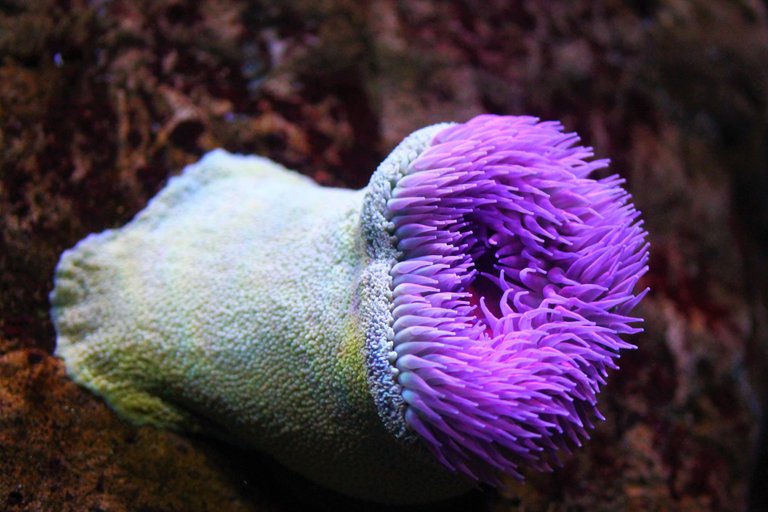
Anemones are undoubtedly one of the strangest and most curious animals that inhabit the seas and oceans, they have a relationship with jellyfish, so much so that they share the same phylum, taxonomic anemones are grouped in the Anthozoa class, and inhabit the same ecosystems that corals basically share their marine space! Let's remember in Biology classes when the teacher explained to us that anemones only have a phase called polyp and their behavior is that they are solitary animals!😮😱👨💻🌍
Las anémonas sin duda alguna son uno de los animales mas extraños y curiosos que habitan los mares y oceanos, tienen una relacion con las medusas, tanto asi que comparten el mismo filo, taxonomicante las anemonas estan agrupadas en la clase Antozoos, y habitan en los mismos ecosistemas que los corales basicamente comparten su espacio marino! recordemos en las clases de Biologia cuando el profesor nos explicaba que las anemonas solo tienen una fase llamada polipo y su comportamiento es que son animales solitarios!💙🌊🧭

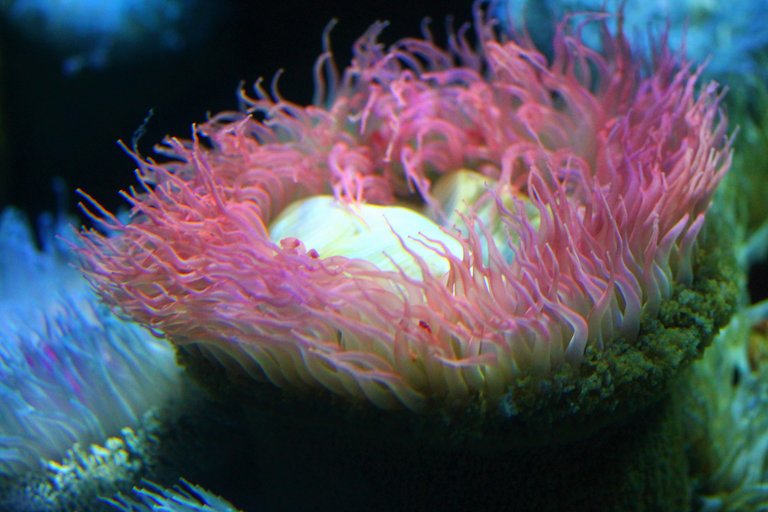
Well continuing with the anemones they have a radial symmetry and if we see their anatomy in detail we realize that their body has a cylinder-shaped appearance! They are invertebrate animals so they do not have a backbone or bones, I have personally touched several anemones and they are rubbery and slippery, if we want to find anenomas, we just have to go to the seabed and we will find them subject to the substrate, that is where they live, and it is interesting because they have an organ called "pedal disk" that allows them to create a suction and adhere to any surface!🙂🤓
Bien continuando con las anemonas tienen una simetria radial y si vemos con detalle su anatomia nos damos cuenta que su cuerpo tiene un aspecto en forma de cilindro! son animales invertebrados por lo que no tienen columna vertebral ni huesos, yo personalmente he tocado varias anemonas y son gomosas y resbalosas, si queremos encontrar anenomas basta con ir al fondo marino y las vamos a encontrar sujetas al sustrato es alli donde habitan, y es interesante porque tienen un organo llamado "disco pedal" que les permite crear una succion y adherirse a cualquier superficie!🧭🐠

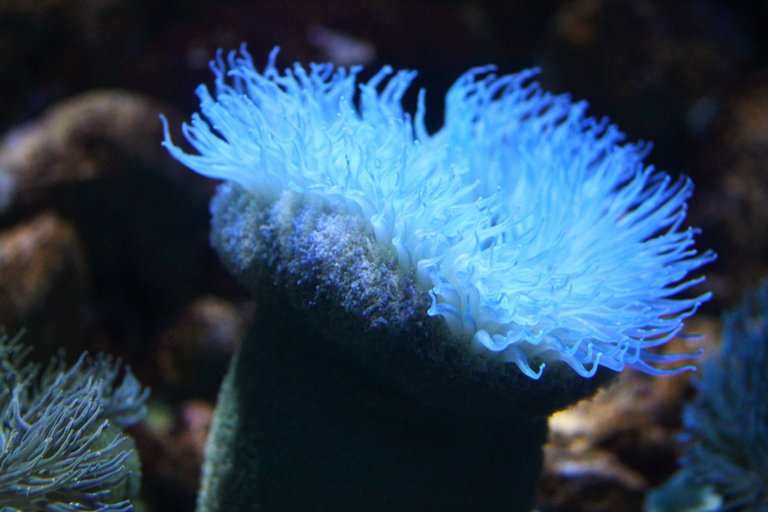
The anatomy and physiology of anemones always seemed strange to me because they only have one orifice to carry out the work of feeding and excretion, strange, right? Can you imagine if we ate and defecated through our mouths? xD, there would be no need to always brush our teeth it would not make sense xD, actually despite being strange it has conferred an evolutionary and adaptive characteristic on anemones for many millions of years, the place where the exchange takes place is called "oral disk" and we see it at the top of the anemone!😮😱
Siempre me parecio extraña la anatomia y fisiologia de las anemonas porque solo tienen un orificio para realizar el trabajo de alimentacion y excrecion, extraño no? te imaginas si nosotros comieramos y defecaramos por la boca? xD, no habria necesidad de lavarnos siempre los dientes no tendria sentido xD, en realidad apesar de ser extraño ha conferido a las anemonas una caracteristica evolutiva y adaptativa por muchos millones de años, el sitio donde se realiza el intercambio se llama "disco oral" y lo vemos en la parte superior de la anemona!🛑🕵️♀️


Around the oral disc we find the most incredible thing that an anemone has its tentacles, these animals do not have specialized organs like us, I mean we have a stomach to digest, a kidney to filter! in their case they present something called a "gastrovascular cavity" that performs several functions, it is not an organ itself, on the contrary it is a structure that fulfills the function of nutrition and respiration, it is as if our stomach and lungs were fused! fantastic right?😍✅
Alrededor del disco oral nos encontramo con lo mas increible que tiene una anemona sus tentaculos, estos animales no tiene organos especializados como nosotros, osea tenemos un estomago para digerir, un riñon para filtrar! en su caso presentan algo llamado "cavidad gastrovascular" que realiza varias funciones, no es propiamente un organo, al contrario es una estructura que cumple la funcion de nutricion y respiracion, es como si nuestro estomago y pulmones estuviesen fusionados! fantastico cierto?🐠🐟

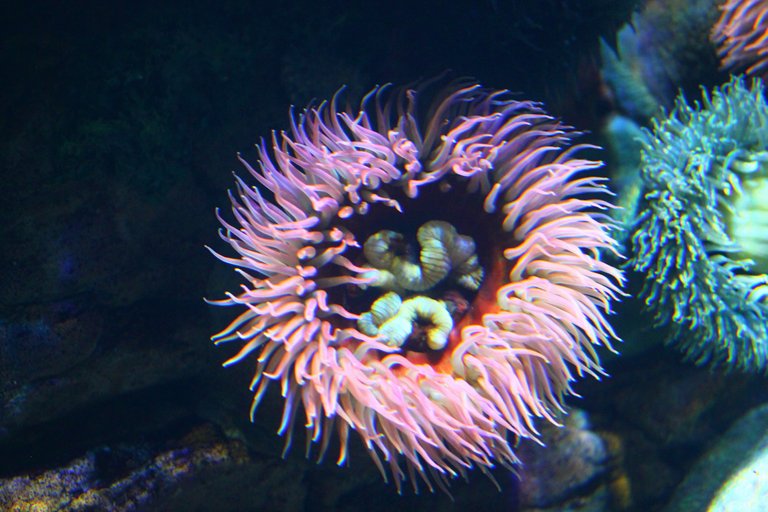
And if we talk about the nervous system of the animal, it is too basic and primitive, it has not undergone evolutionary changes for many years, its main function is to capture external stimuli and perform homeostasis, anemones also share a defense and predation mechanism, they have very powerful toxins in their tentacles. They have the name cnidocytes, almost always the cnidocytes are concentrated in the tentacles of the animal but there are some species that have it throughout the body and are the most dangerous!😁😁
Y si hablamos del sistema nervioso del animal es demasiado basico y primitivo no ha sufrido cambios evolutivos por muchos años, su principal funcion es captar estimulos externos y realizar homeostasis, las anemonas tambien comparten un mecanismo de defensa y predacion tienen en sus tentaculos toxinas muy poderosas, tienen como nombre cnidocitos, casi siempre los cnidocitos estan concentrado en los tentaculos del animal pero hay algunas especies que lo tienen en todo el cuerpo y son las mas peligrosas!🤩💥💥



The toxin of anemones have the paralyzing property what they do is paralyze their prey or defend themselves, in fact anemones can also catch small animals with their tentacles, paralyze them and then they are taken to the oral disc to be ingested! Being primitive and ancient has given them the particularity of inhabiting different types of ecosystems, some more extreme than others! We could call them cosmopolitan because they are in almost any sea or ocean!💥💥
La toxina de las anemonas tienen la propiedad paralizante lo que hacen es paralizar a sus presas o defenderse, en realidad las anemonas tambien pueden atrapar pequeños animales con sus tentaculos los paralizan y luego son llevados al disco oral para ser ingeridos! ser primitivos y antiguos les ha conferido la particularidad de habitar distintos tipos de ecosistemas algunos mas extremos que otros! podriamos llamarles cosmopolitas porque estan e casi cualquier mar o oceano! 🧠🌍💙

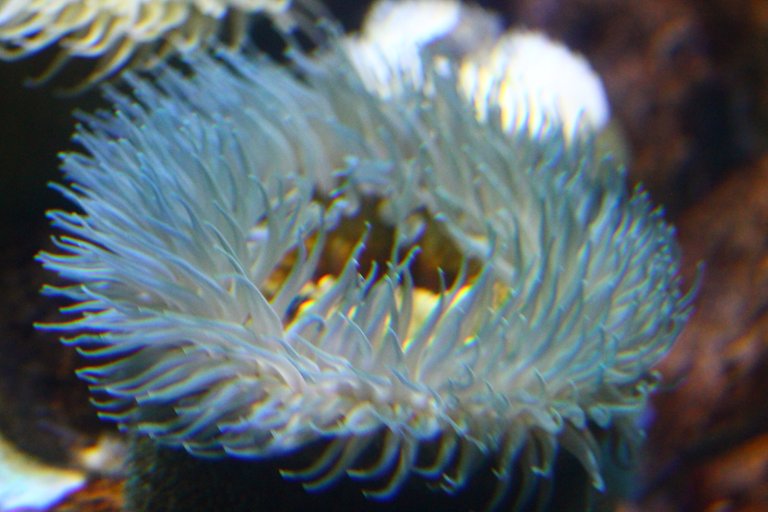
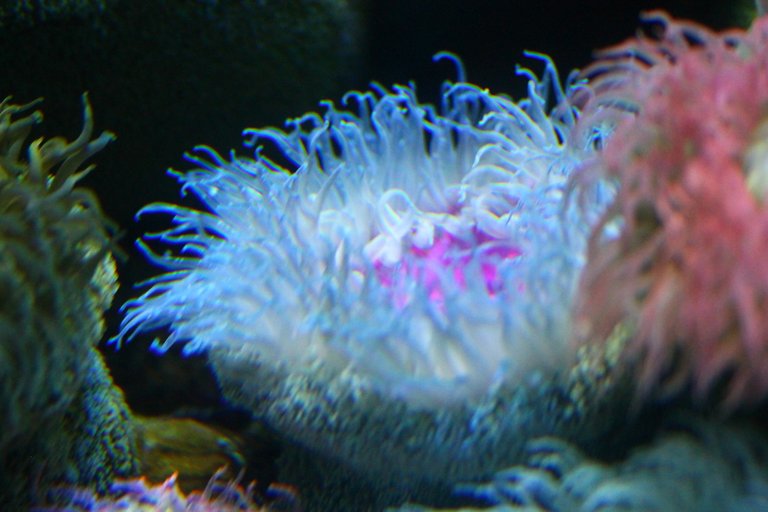
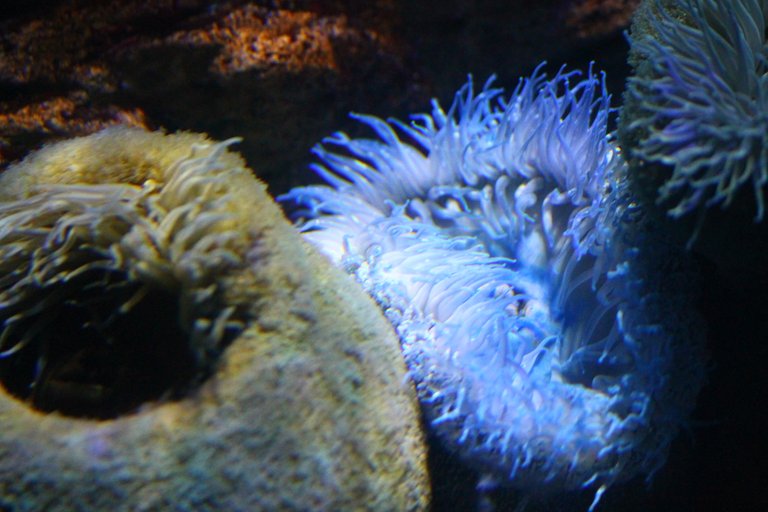
If we move to very extreme latitudes here we will also get anemones, even with very low ocean water they adapted to live in these habitats, but despite being adaptive animals they have preference in higher climates and with less depth, that is, we mean to tropical climates! habitat? easy at the bottom of the sea, remember that they are "BENTONIC" species, that is, they are always linked to the substrate, we will not see an anemone swimming ...😍😍
Si nos desplazamos a latitudes muy extremas aqui tambien conseguiremos anemonas, mismo con el agua del oceano muy baja ellas se adaptaron para vivir en estos habitats, pero apesar de ser animales adaptativos tienen preferencia en los climas mas altos y con menos profundidad, osea nos referimos a climas tropicales! habitat? facil en el fondo del mar, recordemos que son especies "BENTONICAS" osea siempre estan ligadas al sustrato, no vamos a ver una anemona nadando...😱😱

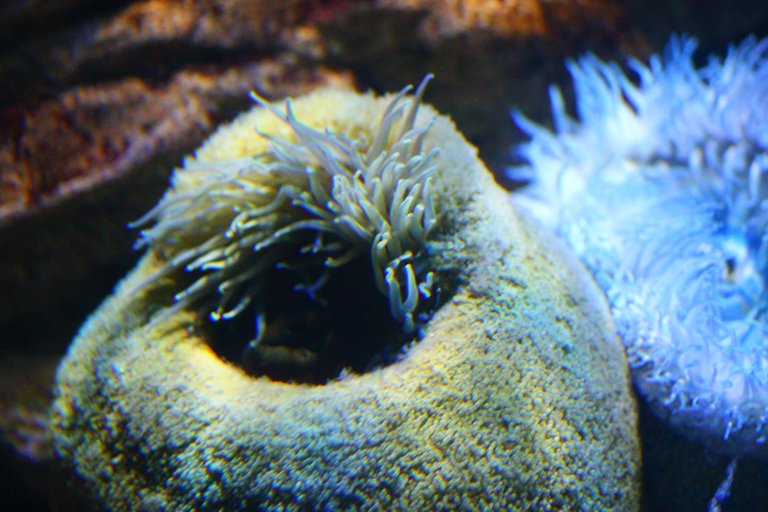
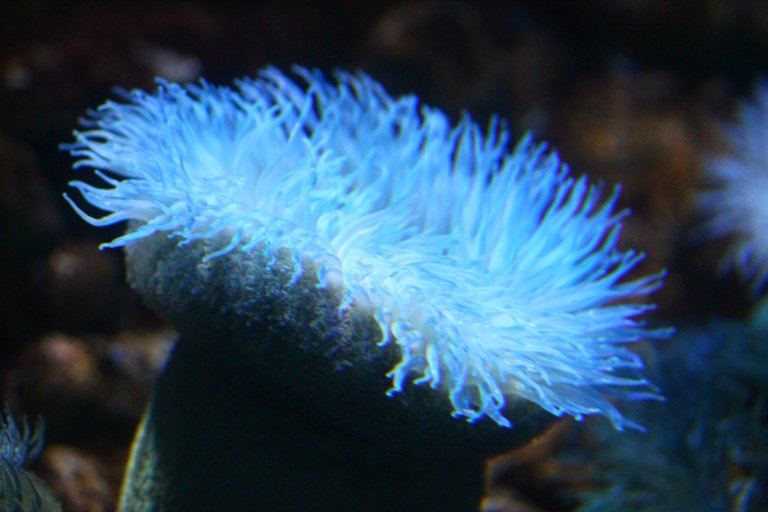
The amount of solar radiation that penetrates the water is the main external factor that led to the animal's adaptations, the animal truly adapts to the environment and not the other way around, so the depth of each species will depend on the amount of sun. that receives daily, the anemones have learned to share habitat with the corals, there is an advantageous situation of this! They practice mutualistic symbiosis, that is, both species have a benefit of being together! Do you remember my last post where I talk about the ecology of the anemone fish? Well, they also make a relationship with these fish and take advantage of it!🙂🙂
La cantidad de radiacion solar que penetra en el agua es el principal factor externo que llevo a realizar las adaptaciones del animal, verdaderamente el animal se adapta al ambien y no al contrario, por lo que la pronfundidad de cada especie dependera de la cantidad de sol que recibe diariamente, las anemonas han aprendido a compartir habitat con los corales, hay una situacion ventajosa de esto! practican la simbiosis mutualista, osea ambas especies tienen un beneficio de estar juntas! recuerdas mi post pasado donde hablo sobre la ecologia del pez anemona? pues ellas tambien realizan una relacion con estos peces y sacan provecho!🧠🧠

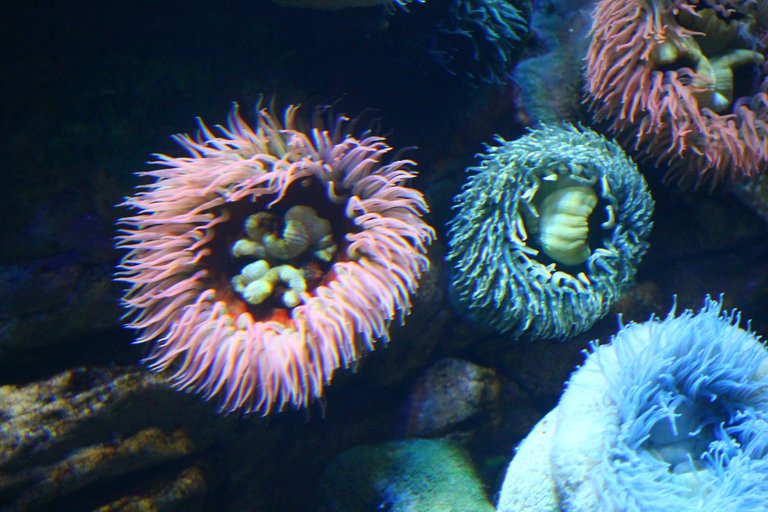
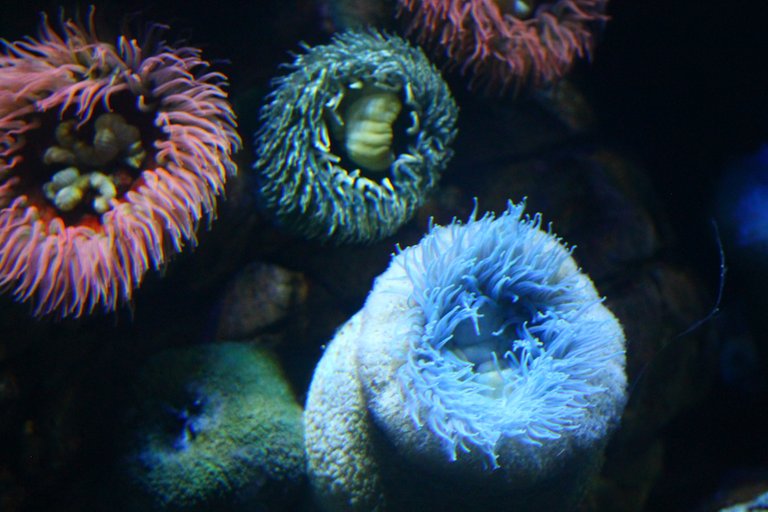
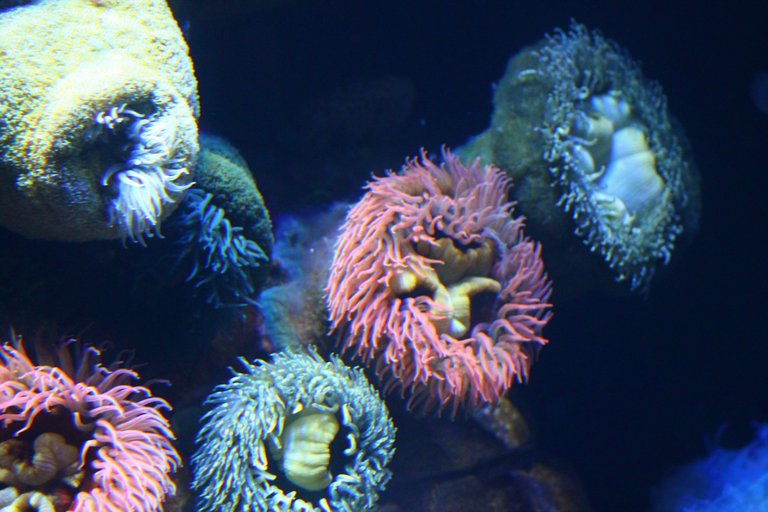
There is also a symbiotic relationship with microscopic algae, there is an oxygenation and the algae feed on the waste of the anemones, although the anemones have a diet more oriented to predation than to scavenging, they usually capture their prey with their tentacles, there is no a prey as a preference anemones can capture small mollusks, small fish actually anything that fits in their mouth is food!🧠😁😱
Existe tambien una relacion simbiotica con algas microscopicas, hay una oxigenacion y las algas se alimentan de los despercidios de las anemonas, bien las anemonas tienen una dieta mas orientada a la depredacion que a la carroñeria, habitualmente capturan sus presas con los tentaculos, no hay una presa como preferencia las anemonas pueden capturar pequeños moluscos, peces pequeños en realidad cualquier cosa que quepa en su boca es alimento!🐟🐠🌊

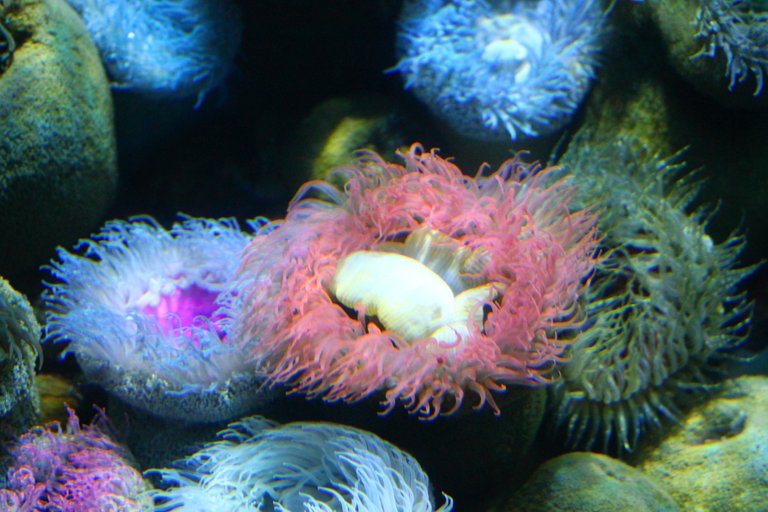
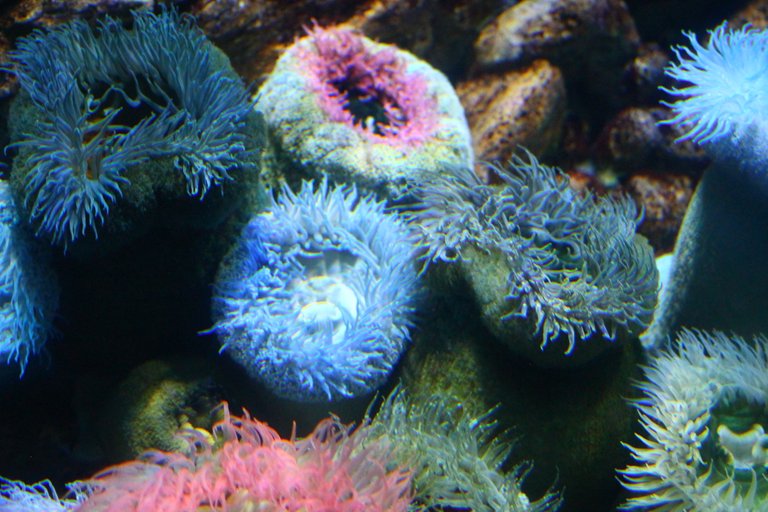
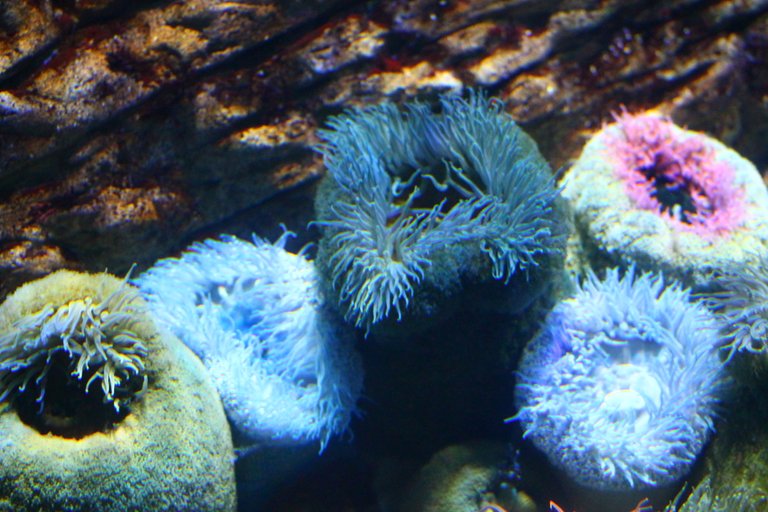
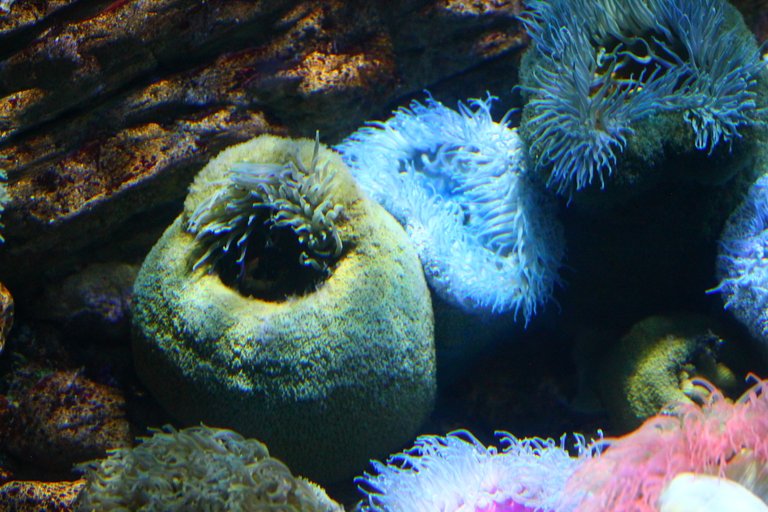
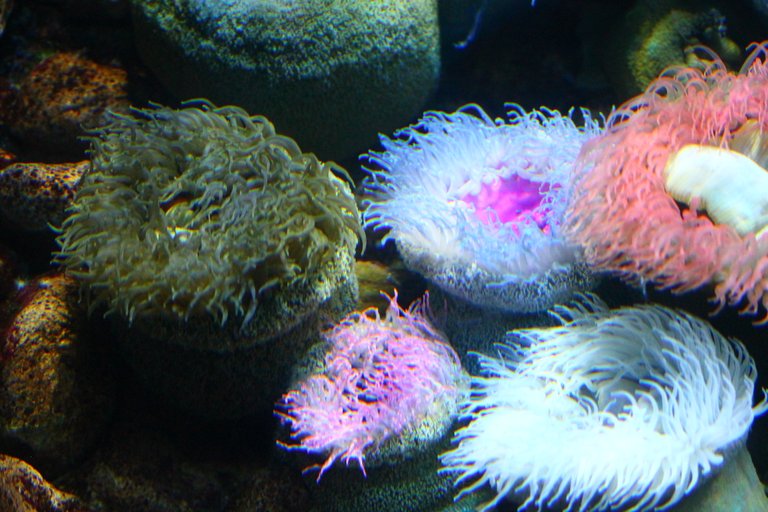
Sometimes I wonder how a species cannot be so evolutionarily successful if it practices sexual and asexual reproduction? It is like seeing common toads, when a common toad would become extinct? This is a great advantage of the species to maximize its existence on our planet for many years, asexually they practice "budding or binary fission" sometimes there is a groove in the pedal disc and multiple anemones are given rise!😱😁🔬
Aveces me pregunto como una especie no puede ser tan exitosa evolutivamente si practica la reproduccion sexual y asexual? es como ver a los sapos comunes, cuando un sapon comun llegaria a extinguirse? esta es una gran ventaja de la especie para maximizar su existencia en nuestro planeta por muchos años, asexualmente practican la "gemacion o fision binaria" algunas veces hay una rutura en el disco de pedal y se da origen a multiples anemonas!🧬🧬🧬




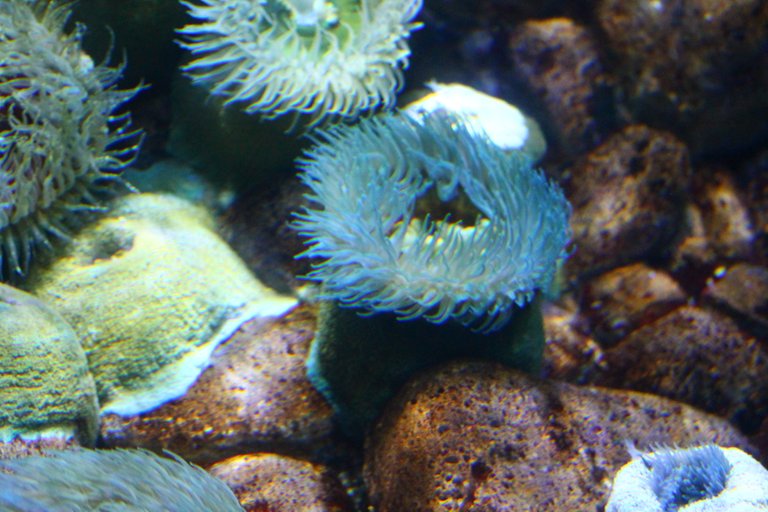
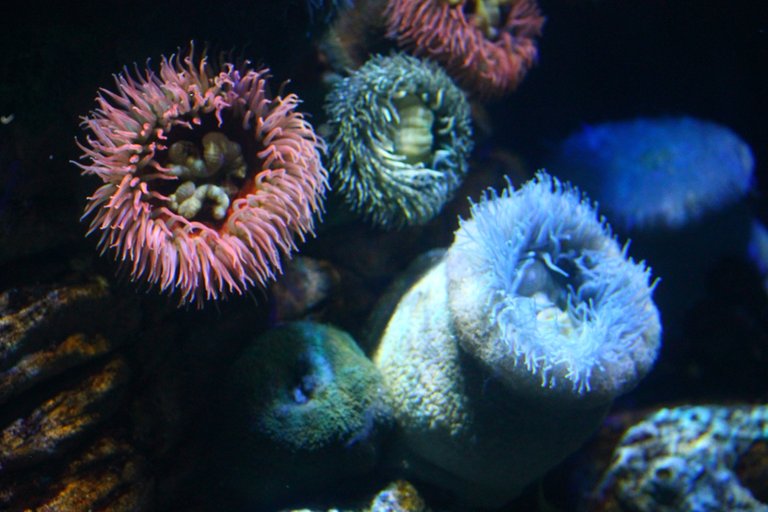

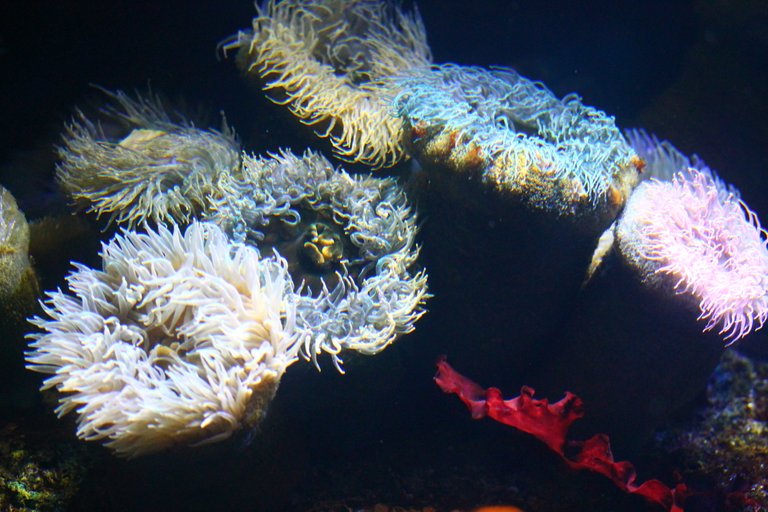
Sexually the anemones practice external sexual reproduction, the male places his "sperm" in the external environment thus stimulating the female to release her eggs and fertilization occurs there! Incredibly, and to make the animals more interesting, we find that there are species that are hermaphrodites, depending on the environment, if there is an excess of one genus, then they use their opposite reproductive organ!👨👩
Sexualmente las anemonas practican la reproduccion sexual externa, el macho coloca sus "espermas" en el medio externo asi estimula a la hembra a soltar sus ovulos y alli ocurre la fecundacion! increiblemente y para hacer a los animales mas interesantes nos encontramos que hay especies que son hermafroditas, dependiendo del medio si hay exceso de un genero entonces utilizan su organo reproductor opuesto!💯🚻🚻

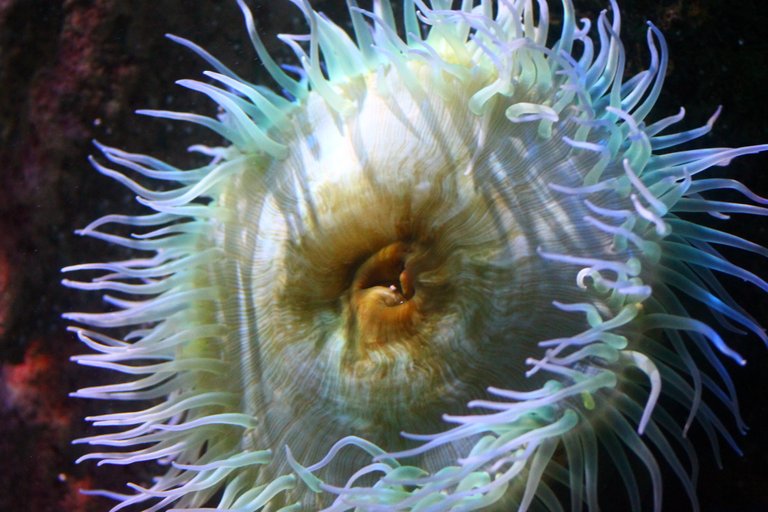
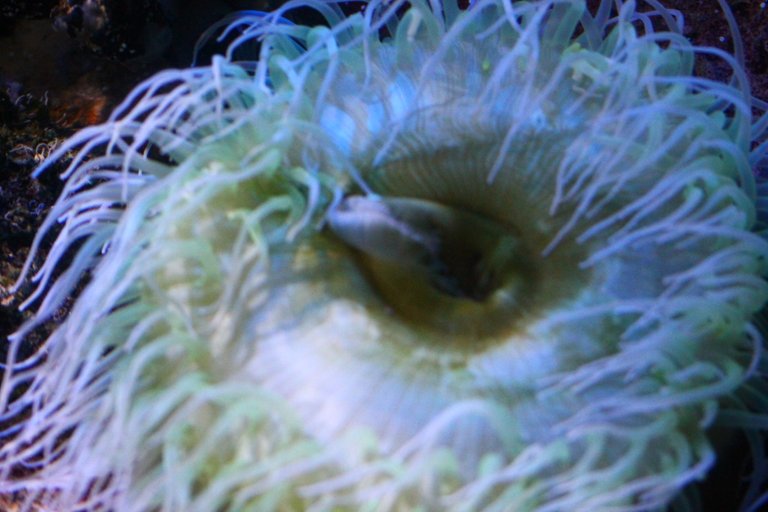
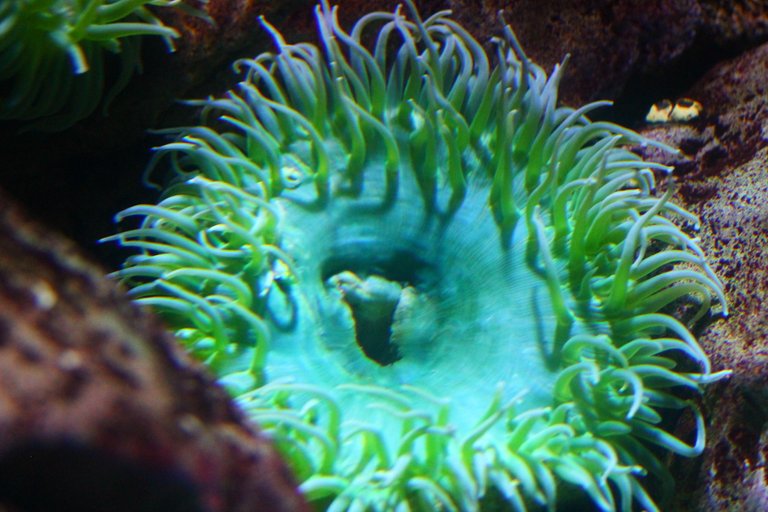
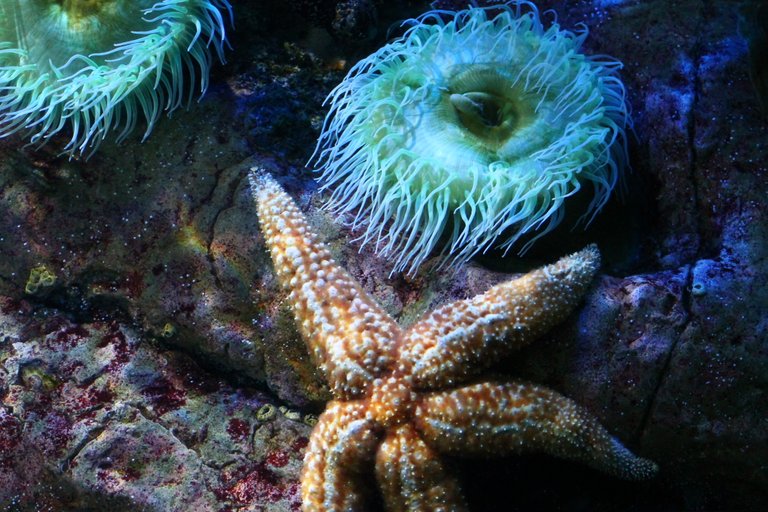
Finally and as a lover and expert in aquariums, I must highlight the importance in recent years of anemones within aquariums, many species are used to create an artificial ecosystem and create very realistic saltwater aquariums, this in turn generates an impact on the population of the anemones by commercialization and commercial exploitation! In fact, in recent decades, anemones have considerably reduced their global population due to illegal commercialization and climate change!💔💔💥
Por ultimo y como amante y experto en acuarofilia debo resaltar la importancia en estos ultimos años de las anemonas dentro de los acuarios muchas especies son utilizadas para crear un ecosistema artificial y crear acuarios muy realistas de agua salada, esto a su vez genera un impacto en la poblacion de las anemonas por la comercializacion y explotacion comercial! en realidad en estas ultimas decadas las anemonas han reducido considerablemente su poblacion global por la comercializacion ilegal y el cambio climatico!🤦♂️🤦♀️


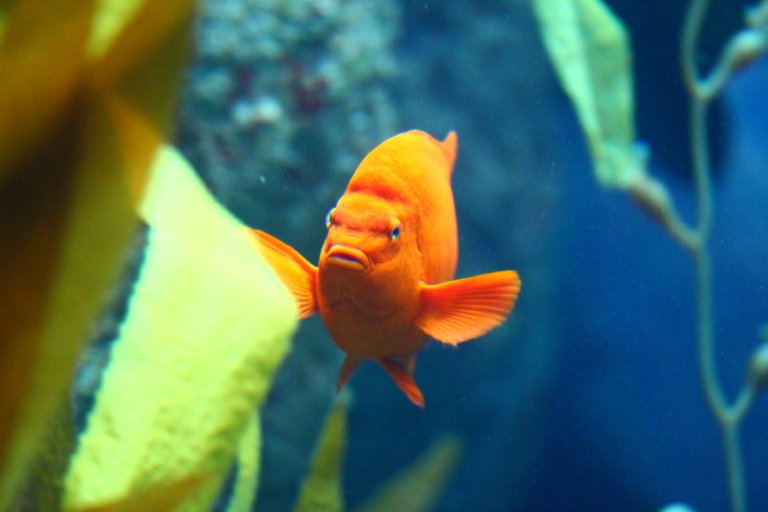
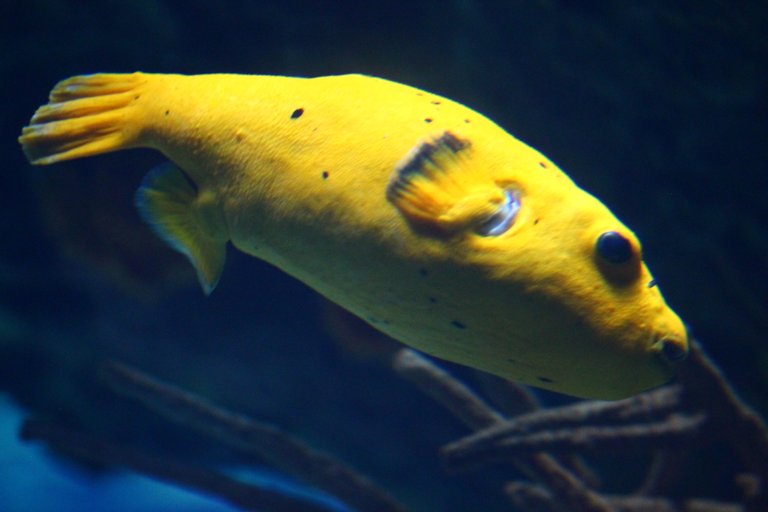

DNA is an organization to foster and DENSIFY NATURE-APPRECIATION which aims to establish REPORTS OF BIODIVERSITY DATA that is contributed by all of us Hiveans and subsequently cataloged.
Therefore DNA searches for HIGH-QUALITY posts that aim to DESCRIBE and determine the BIODIVERSITY AROUND YOU with added EXPLANATIONS and INFORMATION. For these informative posts they offer a CURATION SERVICE using the @dna.org account. It is also a CURATION TRAIL. Just add the #dna TAG if you think that any of your posts is what they are looking for.
THANKS FOR READING ME (PHOTOS OF MY PROPERTY)🙂🧠🦾👍
https://www.depeces.com/anemona-de-mar.html
















































@pixresteemer(3/5) gave you LUV. | wallet | market | tools | connect | <><